|

Useful Tree








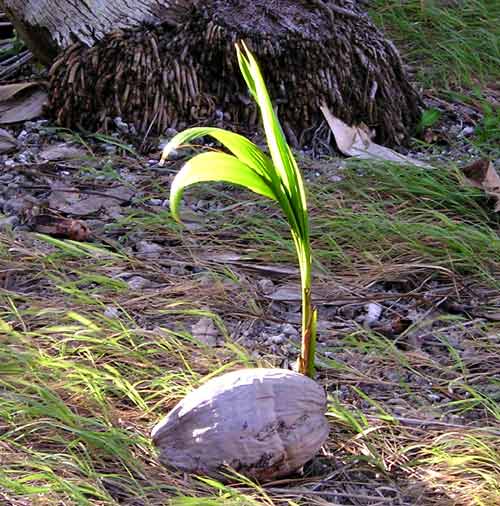




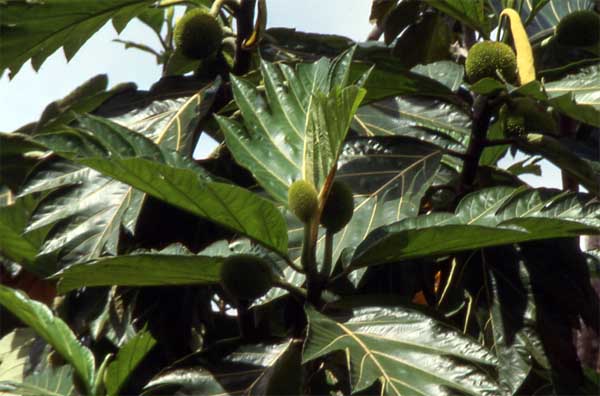


All trees are useful in some way so this is more a catch-all for the various trees that did not fall into the other categories. Even some of these types of trees that have medicinal properties, so those listings are linked to the "Medicinal plant" section.
To navigate this site you simply hold the cursor over a picture to identify the category then click on that picture to take you to more informationor at least a better picture of it.


Allspice
(Pimenta dioca)
The All spice tree is one of the best well known by the people of the region
of el Peten and Tikal, and it was undoubtedly by the Mayans, because
it is a Home medicine, and it is used to seasoning food. It was also highly prized by the Spaniards who encountered it here. To recognize it in the forest, the trunk is smooth very similar to eucalyptus, the
stalk not always straight, then it can be identified by its smell, which
distinguishes the tree. The leafs when they are crushed have a strong Pimienta Gordas smell
which can be confusing. The flowers are fragrant with a 6 cms. of diameter.
The fruit is a berry of 10 cms. with 1 or 2 seeds. The tree
can reach 20 mts. High, and 30 or 40 diameter. The name "allspice" was coined as early as 1621 by the English, who thought it combined the flavour of cinnamon, nutmeg and cloves.
This tree lives 0-400 under sea level in humid subtropical forest,
and very humid subtropical forest, like Peten, Belize, Quiche, Alta
Verapaz, Izabal, from South East of Mexico to Panama.
Allspice wood is brown reddish.
It is one of the harder woods of Guatemala. It is commonly used
but as ornamental and to produce pepper, the density is appropriate
to produce a excellent degree coal. It is possible that the Mayans used it in this way and called
it Nabacuk.


Banana
(Musa acuminata)
["haas" in Mayan] Probably the most important plant in Central America is the banana, please read the page on
agriculture for a better understanding. From its use as a subsistence backyard drop to its role in international politics,
the banana has left its imprint on human ecology in Latin America, it is likely that the banana will be included no matter
what level of the study addressed.
Besides being nutritious and medicinal, there are several uses for banana other than food too. Bananas are plants so they do not have a trunk to speak of, they
are layers of leaves. When a plant is cut down, the core can be chopped up and made into a pulp for making paper or bowls.
The leaves themselves are used to wrap things in for cooking like tamales or meats before roasting them in a pit fire.


Breadfruit (Artocapus altilis)
[mazapan] Originally introduced from Tahiti (via England and Captain Bligh of "Mutiny on the Bounty" fame). Probably not surprising is that when
it is deep fried, it tastes just like bread or almost a nutty taste.


Calabash(Crescentia cujete)
The Calabash tree (Crescentia cujete) called Morro or Jicara in Spanish and luch in Maya. According to folklore historians the Calabash tree contains a story of a confrontation between good and evil, played out in the form of a ballgame. The Mayas played this game as a ceremonial event. This was done in honor of the Jaguar.
In Mayan belief the Jaguar is also a god. The story goes on to tell how the Calabash tree was considered to be a sacred, forbidden tree. At night the tree has pale yellow flowers that bloom and emit a strong odor that attracts bats! It is inedible but very useful and widely grown. From the size of a plum to a watermelon, the fruit may be harvested. It is then halved and dried out to make an impermeable container good for a cup or bowl. Carvers like to make intricate designs on the outsides. The fruits pulp is used for respiratory problems (asthma). This calabash should not be confused with the calabash vine which is the source of the gourd used for calabash smoking pipes like the one used by Sherlock Holmes.


Ceiba Tree (Ceiba pentandra)
[Silk Cotton Tree, Yaaxch in Mayan] Guatemala's national tree and a tree that has played an important spiritual role to people in the circum-Caribbean region.

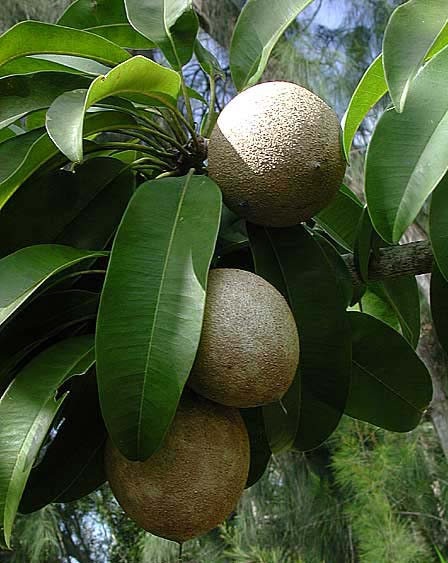
Chico Sapote
(Manilkara zapota)
The Maya called it Sak-ya. The sapodilla tree is the source of a sticky substance that is tapped for the base for chewing gum before
synthetics were introduced called "Chicle". Chicle was the major export of the Petn jungle during the first half of the 20th century. A few
countries, mainly Japan, still import chicle, which, in turn, provides a source of income for those chicleros living in or near the forest. Like
the rubber tree, which also grows wild in the Petn, the sapodilla must be tapped carefully to insure that it will remain alive to provide
chicle over a period of many years. The Sapodilla Tree is a big one, sometimes 40 mts. high, often its trunk is very thick, and the bark is
brown with gray spots, moderately smooth and deeply fissured. This tree lives at 0 to 1200 meters above sea level in dry subtropical forests,
humid subtropical forests and very humid subtropical forest. Its edible fruit, named zapote, tastes like a pear that has been soaked in brown
sugar and is delicious.

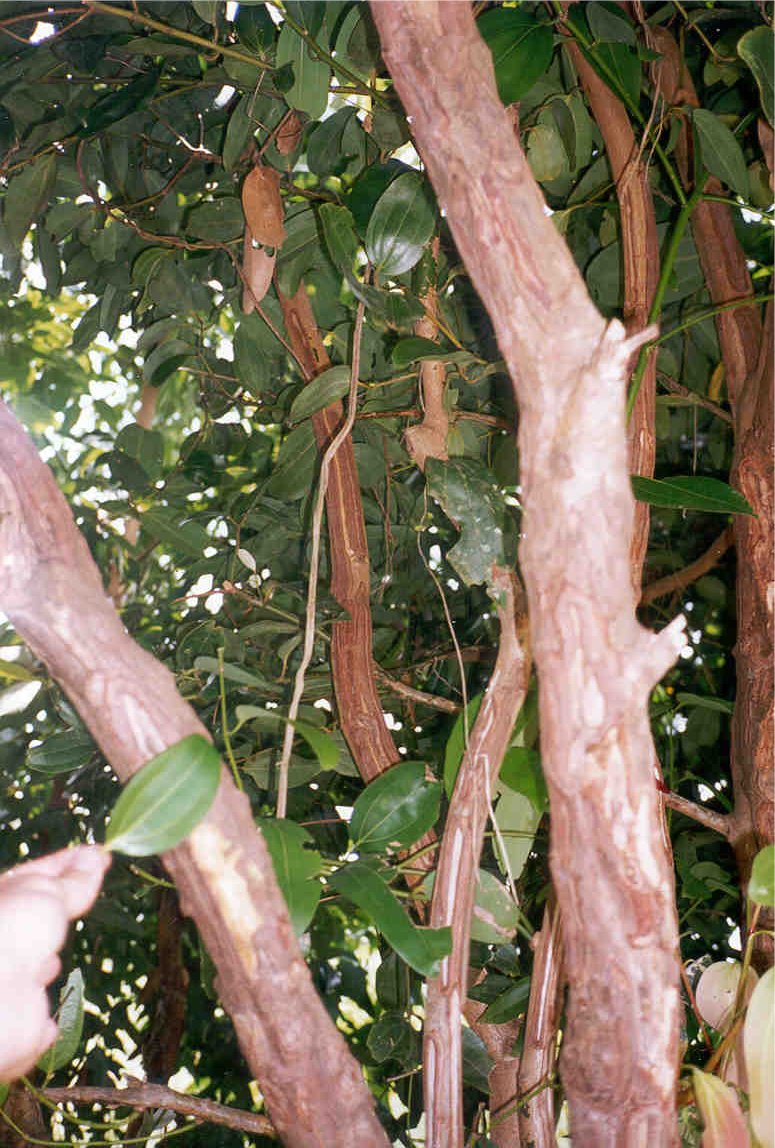
Cinnamon (Cinnamomum verum)
Cinnamon bark is widely used as a spice for cooking.For cultivation, a tree is grown for two years and the it is coppiced. The next year a dozen of so shoots will form from the roots. These shoots are then stripped of their bark and left to dry. Only the thin inner bark is used; the outer woody portion is removed, leaving metre long cinnamon strips which curl into rolls on drying.


Coconut(Cocos nucufera)
(Coco) Although the species is usually found near the sea, it in no sense requires salt for satisfactory growth. In fact, it seems that the species is a poor "competitor," and lives mainly where conditions are not suitable for other species of trees. As long as they are well drained and aerated, coconuts can be grown on almost any kind of soil.

 Cojon(Stemmadenia donnel smitii)
Also known as Huevos de Caballo, grandpa's balls, tonche', cojon, cojotone. It's common name comes from the shape and nature of the large, paired, hanging fruits which resemble horses testicles (in Spanish "cojones") that it produces annually. The tree is has gray bark, with greenish to yellowish tones, which exudes a whitish latex. Inside, along the fruits length of 3 to 6 cms., are red or orange seeds which are produced in abundance. When it was cut exude abundant latex, it occurs in the same manner with the leafs. This tree grows up in humid subtropical forest, or very humid subtropical forest, like Peten, Belice, Quiche, Alta Verapaz, Izabal, Santa Rosa, Escuintla, Guatemala, Solola, Suchitepequez, Retahuleu, Quetzaltenango, San Marcos and from the South East of Mexico to Panama. The wood is light brown, and it is a little bit smooth and the weight is strong and firm. The thick white sap of fruits and stems is sticky and has been used both as glue (e.g. for cigarette wrappers, Allen, 1956) and for chewing gum as some chicleros use the latex to adulterate the composition of the Chicle.
Like many of the most common used and recognized plants in the region, people of the region recognize two species with the same name, huevos de caballo, and distinguish them as male or female. Traditionally, the two have similar characteristics, but the male plant produces smaller and fewer fruits. In this case, both species of Huevos de Caballo have fruits that grow on the tree in pairs. The hard, brown fruits, which are much larger on the female trees, when cracked open, have an orange meat inside which attracts numerous insects. The flowers of the male tree, unlike the fruits, are small and delicate white stars.
The white, milky latex of Huevos de Caballo can be used to kill botfly larvae. Botflies are insects which lay eggs on a specific species of mosquito. When the mosquito bites a mammal, including humans, it implants the egg on the host's skin, and the larvae quickly hatches and burrows down into the host's body, feeding until it is big enough to leave and pupate in the ground. As the botfly moves its spine-covered body abound to eat, it can be quite uncomfortable for the unfortunate host. To get rid of this nuisance, the sticky Huevos de Caballo latex can be used to seal up the hole so that the larvae suffocates and can be squeezed out.


Gumbo Limbo(Bursera simaruba)
["chacah", ka-ka h", or "hu=kup" in Mayan] Also known as the Chino, Naked Indian, Gumbo-limbo or Turpentine tree, the berries are sought by fruit eating birds. The bark has a grayish resin which tastes like turpentine. The bark, gum, and leaves are much esteemed as home remedies. The resinous gum has been used as incense, adhesives for broken dishes, as a protective covering on canoes, and to repel insects and worms.
A fast growing perennial to 3-5 feet tall with yellow flowers on long slender spikes. Grows in zones 3-8. Taken as a tea, it is useful for liver, kidney and bladder problems. It is also a healing herb for mucous membranes and it's astringent properties help stop bleeding. The plant also produces a yellow/gold dye.


Hormigo(Platymicium dimorphandrum)
The Hormigo is an endangered tree that grows in humid forest zones. It is used commonly to make musical instruments, such as the keys
of the marimba. The Hormigo, reaches 25 to 30 meters in height and a diameter of 60 or more centimeters. Its bark is smooth, straight and cylindrical. The bark is brown gray and fissured in a longitudinal form. Its wood is reddish with clear pigmentation, it is strong
and compacted, durable and beautiful sounding when struck. The top is thin with opposing uneven leaves. Its yellow flowers grow in bundles. Its fruit are small membranous smooth vines, and have only one seedling. It grows in Belize, Guatemala, El Salvador and Honduras.
In Guatemala it grows in Rio Dulce, El Petn, Alta Verapaz, Baja Verapaz, Izabal, Chiquimula, Jutiapa, Escuintla, Suchitepequez, Retahuleu, Quetzaltenango and in Huehuetenango.
Click on the tree for more information about the Hormigo.


Matilisquate(Tabebuia rosea)
Matilisguate is a local name for the Tabebuia species here. The tree grows in the humid forest and there are 100 species of them. Uvia de Oro (Tabebuia chrysantha) is another species here. locally The species range from northern Mexico and the Antilles south to northern Argentina, including those on the islands of Hispaniola (Dominican Republic and Haiti) and Cuba.
It grows at an altitude of 0 to 1300 meters above sea level and it may thrive in temperatures between 17C to 30C. The main use of this tree is for traditional medicine. The Matilisguate is a medium level tree. Its bark is straight. The Matilisguate may reach 30 meters in height and 70 cms.
in diameter. It has a prominent top. The bark is fissured in parts and it is rough and gray. The wood is yellow and in some parts brown with strong and durable texture. Its fruit grows in long capsules with a lot of seeds inside. This
tree is found here in Guatemala, Mexico, Central America, Colombia, Ecuador, Venezuela and The Antillas.


Nutmeg (Myristica fragrans)
Native to the Molucca Islands of Indonesia, nutmeg trees have both nutmeg and mace. At one time, nutmeg was considered one of the most valuable spices in the world and shaped the history of the Spice Islands by war and enslavement over this spice. Nutmeg was first brought to Europe from the Banda Islands by Portuguese sailors in 1512 and soon was regarded as a cure all and tonic. Later in the Seventeenth Century the Dutch waged a bloody war, including the massacre and enslavement of the inhabitants of the island of Banda. They then took complete control of nutmeg production in the East Indies.

 Rubber Tree
(Hevea brasilensis)
["yax-ha" or "kiik-che" in Mayan] Hevea brasiliensis is the source of virtually all the world's rubber production. Cutting the bark of this tree releases the latex which is then collected, preserved, and stabilized. The latex is located in the inner bark of the tree and flows in the vessels of the tree. Latex is thought to be a defense against insect predators for the tree.
Rubber was a religious
substance to the Aztecs and Mayans. Rubber was called ulli and it symbolized the life force or blood. Here is the principle of similarity again: A liquid that flows from a cut
tree must be its life blood; never mind that we now know that latex does not
circulate, carries no food or oxygen and does not resemble blood in any
significant biological way. The
symbolism is what is important to the Mayans.
Latex is made in tubular cells called laticifers, and latex is the source
of rubber.
Rubber was burned directly, which it does very well. We know
that from all the burning cars we see exploding, just like on TV.
Rubber was also fashioned into figurines and paintings, and carried in
parades at times when human sacrifices were made to propitiate the gods.
Rubber was valuable for making
rubber balls, which were used in ceremonial ball games. These
were played in stone courts with stone rings and balls that weighed 28-30 pounds
that were shot through the hoops. The game was played more like soccer. Rubber
was used to pay taxes to rulers. Rubber
had a small use in local crafts, as water proofing in the Amazon, and to make
bottles and syringes to use in enemas. Others
were fond of dipping their feet in
the latex and making waterproof shoes that fit perfectly.
The Aztec rubber was obtained from a tree called caouthchouc, meaning
weeping wood.

 Zapotón
(Pachira aquatica)
["poponjoche", "uacoot", or "ya" (Peten, Maya)] White and odorless fat used in industry is extracted from the seeds. In Nicaragua seeds are roasted and eaten, having a taste similar to chestnuts. In Mexico the seeds are much sought after for their nutritional value. Seeds falling in the water feed fish and turtles. The trunk bark is used to caulk ships and make ropes, and also provides a dark red dye to tint sails, mooring ropes, and fishing tackle. Paper, boxes, crates, toys, and some carpentry items are made with the white and soft wood.

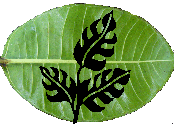

|
|

































